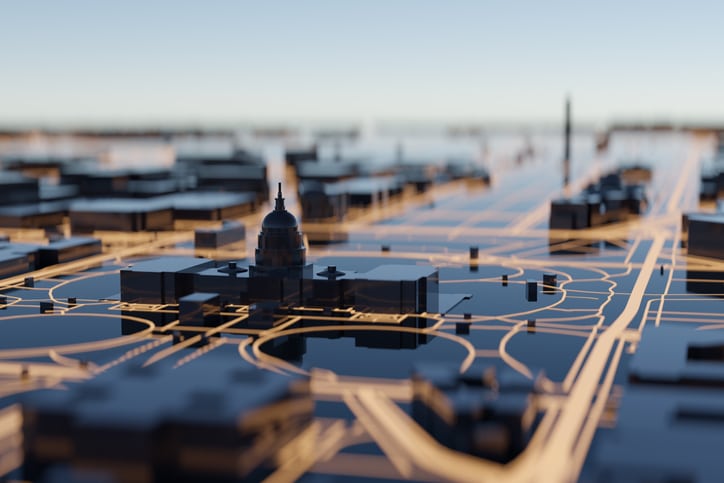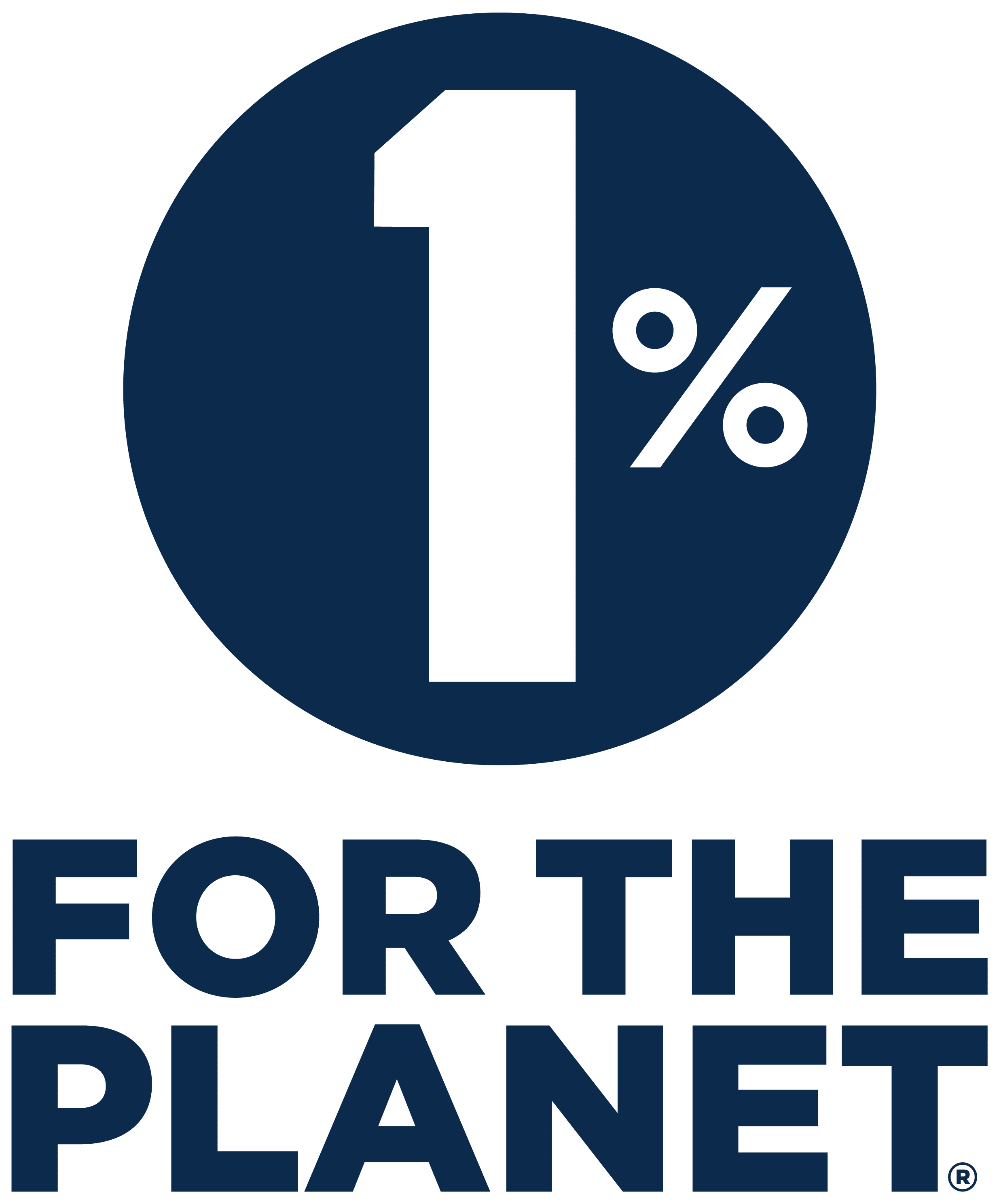Throughout the years, I’ve tried, in various ways, to live the most “sustainable” lifestyle I can. I’ve dabbled in “zero-waste” and “plastic free” commitments, engaged in political activism, composted my food waste, and stayed consistent with a vegan diet. However, in spite of (what I consider to be) all my hard work, it’s hard to escape the overarching feeling of: “does any of this really matter?” In a world poisoned with massive CO2 emissions on a global scale, an ocean full of plastic, and pesticides sprayed into the ground daily, does my little bamboo toothbrush and shampoo bar make any difference?
Within the realm of sustainability and environmentalism, one ongoing debate prevails – where should we put more of our time and resources: towards making shifts in our daily lives and routines, or towards pushing for greater systemic change?
While there is a valid rationale for the greater importance of either side, I argue that these two ideas are not opposed, but rather two deeply interconnected building blocks that help make up the beautiful toolkit we are developing to help save Mother Earth!
Individual Action Side
Before looking at the intersections between these ideologies, I want to briefly outline each side, starting with “individual action.” Broadly, each human on this planet leaves a “carbon footprint” during their daily lives, doing everything from driving, eating, turning on the lights, and washing clothes. The amount of carbon emitted from each individual varies, but it should be noted that the average individual in high-income countries produces far, far more CO2 on average than that of an individual in a lower-income country (for example, the average American produces 15 tons of CO2, while the average Brazilian produces around 2 tons).
According to Dr. Katharine Wilkonsin in her beautiful anthology “All We Can Save” (which I highly recommend reading), there are five main factors that make up an individual’s carbon footprint:
- Reproduction (making more humans)
- Driving personal vehicles
- Flying
- Energy Consumption
- Diet
Looking at these statistics, the next question you may ask is, “what can I do?” The solutions correspond as so:
- While lowering the population would have a positive impact on the environment, this is not a call to have fewer children, as I believe in every woman’s right to have their own autonomy. Rather, we should push towards educating women about reproductive health and rights, and family planning, so we can foster a population of people who are able to choose a family size that works best for them.
- Take public transportation, bike, or walk. While this is much easier done in European countries than the U.S., the solution remains the same. Cutting back on driving as much as possible is one of the simplest climate solutions! Not to mention the other physical and mental health benefits of alternatives such as walking or biking.
- Fly less! I am a big culprit of this. I fly halfway across the world to visit my family twice a year, leaving a massive carbon footprint (and sense of guilt) in my path. But I’m nowhere near athletic enough to swim across the Atlantic, so I understand the necessity of flying on occasion. However, there are incredible train systems all around the world that offer scenic views and direct routes, offering a unique, and much less impactful mode of transportation. Learn more about ways you can travel sustainably! In addition, switching to video calls and online conferences is becoming the new norm, so traveling for work or business is something we are (hopefully) seeing less and less of in the future.
- Energy consumption – this involves everything from washing your clothes, using your lights, heating your house, charging your computer, the list goes on. Switching to renewable energy sources is the best way to combat this, but there are many smaller shifts you can make in your daily life to conserve energy. Learn more about simple sustainable shifts.
- It is relatively well-known by now that a plant-based diet has many environmental benefits. This is not a call to become a strict vegan or vegetarian, though I support that choice! It is just a call to cultivate more awareness about what we eat and how it is impacting our planet. And slightly shifting your diet is a great way to take control as an individual in this climate battle – whether that means eating less meat, or meat that is produced in a more sustainable and humane way (such as pasture-raised meat, to understand more about how to sustainably consume meat, click here). Lastly, here is a nice little visual showing the carbon footprint per kilogram of the food source produced.
Systemic Change Side
So those are the main individual factors of climate change from an individual standpoint, and the most impactful ways to combat them. But even if every single person cut their carbon footprint down by half, it’s hard not to wonder, would it even matter?
So much of the globe’s CO2 emissions come from industries and companies that we have little control over – emissions from factories that produce things like steel, iron, and paper, elements that make up items that have become indispensable to our everyday lives, like phones, computers, and cutlery. Huge amounts of emissions come from transportation, not only cars, but public transport of all sorts, cargo and shipping, and even pipelines that carry our waste. We cannot be expected to stay in one spot our whole lives, we are dependent on this technology, and rightfully need these industries to maintain a healthy, happy balance. That’s not to mention all the massive private companies that are responsible for CO2 impacts, like Exxon Mobil (emitting over 30 MILLION tons of CO2 annually), or Nestle and Coca-Cola that fill our oceans and landfills with shiny plastics.
Learning about the dangerous reality of pollution and climate change can lead to a dark, scary hole, as it once did for me. Especially when it feels like a bulk of the damage is being perpetuated by industries infinitely larger and more powerful than one little individual. It’s hard not to feel as if bringing your reusable mug to your local cafe is going to make any difference in a world that needs a monumental systemic shift. After having this realization myself, I wondered why we even strive to be more sustainable on an individual level at all? But eventually I realized there was an element missing from this debate.
Individual & The System – An Interconnected Network
The “system” and “individuals” are not two mutually exclusive entities. In fact, it is quite the opposite, the system is only the system because it consists of tiny little living, breathing, consuming humans. And we, humans, are dependent on the “system” to live the lives we are so used to living. Yes, we may stick our middle fingers up at the governments and industries that are burning holes in our ozone layers, but it is because of this system that we are able to turn our lights on at night, turn the heat on in the winter, fly to Spain in the summer, and charge our phones to check Instagram before bed. The system and the individual are one. So I suggest a different action plan that utilizes the power we have to come together as individuals and make a more meaningful systemic change. Here is the plan I suggest:
- First, pay attention to where your money is flowing. The “system,” be it oil and gas industry, aviation, food, clothes, or even scented candles, are dependent on your consumption and investment to thrive. Without a consumer, there is no business. So before you buy, take a little time to understand where that money is actually going. Or one step further, find more sustainable alternatives to products you already purchase. Keep an eye out for companies that are part of the 1% For the Planet Movement, B-Corp Certified, or Regenerative Organic Certified, (just to name a few). The companies that are part of these movements have gone beyond just offering sustainable alternatives, but are actively using part of their profit to give back to research and campaigns that aid the planet.
- Educate yourself! Just as with politics, the news, and TikTok, climate change is so dark and scary, that it’s easier to just look the other way. However, there are so, so many resources to educate yourself on the facts and figures of climate change, as well as the creative and inspiring individuals, entrepreneurs, and activists that are doing so much to make a change. One of my favorite resources, Project Drawdown, has a comprehensive list of every solution ever needed to stop climate change for good.
- Building off the theme of education, the next action is to inform others. The other day I went for a walk with my aunt, who I haven’t seen in about five years. She told me, “every time I put something in a plastic bag, I think of you, and rack my brain for an alternative.” This warms my heart. Besides the obvious charm and self-assuring compliment, it made me realize that my small actions and movement towards creating awareness is having a real impact on others. And this is not the first time someone has said something like this to me, I have gotten similar comments from friends and family of all kinds. So I encourage you to do the same! The ignorance of others is often mistaken for a lack of care and interest. Climate change is scary and complex, and many people do not even know where to start thinking or talking about it. Rather than looking down on these people, help inform them, because odds are they will welcome the new insights, suggestions, and positivity!
- The last action is to stay optimistic, because, if nothing else, why not? While it is important to recognize the depths of destruction and harm that are being done to this planet, dwelling on it will lead to anxiety, burnout, and inaction. Instead, put your time and energy on what can be done, and what is being done, and most importantly, reconnecting to why it matters in the first place – we love and honor our Mother Earth! Just as the individual and the system are one, we are all one with the Planet and we are nothing without it.
Further Learning
- Learn more about what a carbon footprint is
- What is a carbon footprint, and why does it matter?
- Calculate your carbon footprint
- Learn more about global carbon emissions
- Breakdown of global greenhouse gasses per the US Environmental Protection Agency
- Learn more about pro-climate businesses and corporations
- Keep an eye out for corporations who are certified by these movements. They aim to hold businesses to the highest environmental and social standards
Certified B-Corporation
1% For the Planet
Regenerative Organic Certified
Fair Trade Certification, such as Fair for Life
Podcasts
- How to Save a Planet by Gimlet Media
- TIL Climate by MIT Environmental Solutions Initiative
- The Climate Question by BBC World Service
- Sustainability Defined by Jay Siegel and Scott Breen
Films
- Kiss the Ground
- Cowspiracy
- A Plastic Ocean
- Seaspiracy
Shows on Netflix
- Our Planet
- Our Great National Parks
- One Strange Rock
Books
- Being the Change by Peter Kalmus
- Give a Shit by Ashlee Piper
- Drawdown by Paul Hawken
- Eating Animals by Jonathan Safran Foer
Instagram Pages to Follow
- @fairworldprj
- @intersectionalenvironmentalist
- @ayanaeliza
- @get.waste.ed
- @futureearth





